‹ drawings
Background to Hamersley Iron
1969 and 1991
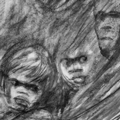 |
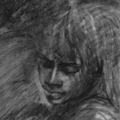 |
 |
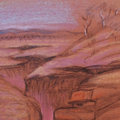 |
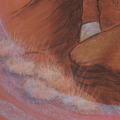 |
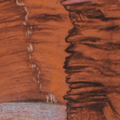 |
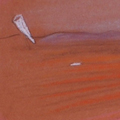 |
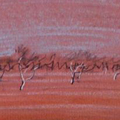 |
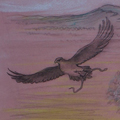 |
| < back | next > | |
19 to 27 of 30 drawings |
||
Background to Hamersley Iron 1969 and 1991. This group of artworks has three related parts. (1) Original field drawings depicting early stages of mining activity and the building of a c400km railway line through Western Australia's Pilbara region. Number of works: 62. Medium: charcoal and pencil on Hamersley Iron's transparent plan paper, each 32 x 46cm. Produced in mid 1969 around Paraburdoo, Mt Tom Price and Dampier. Collection: The Estate of Elizabeth Durack. (2) A series of 11 'Environmental Panels'. Medium: charcoal, graphite, ink on paper; each 210 x 95cms; produced 1969. Collection: CRA, Melbourne. Refer artist's notes on the theme of the Panels, this page.* (3) Pastel landscapes of the Pilbara x 9 each about 60 x 50cm, produced in 1991. Collection: Rio Tinto, Perth WA. Parts (1) and (2) reflect influences that, decades later, combined to produce The Art of Eddie Burrup. # * Theme of the Panels: Thousands of years before the arrival of Europeans to Australia the island continent was already thinly populated. One wave of these early wanderers landed from boats along the northwest coast. Here they entered an arid but flowery Eden — kangaroo and emu abounded, fish and mollusc were plentiful and the vegetation provided edible seeds, nuts, leaves and roots. Although the area was subject to drought, summer cyclones usually supplied a ten inch annual supply of fresh water to fill deep pools in the many rivers and creeks. Four large tribes inhabited the land between the Ashburton and Fortescue rivers: the (Njibadi) Indjibandi, (Gurajara) Karadjari, (Gududjara) Tjalkadjara and (Djargudi) Tjarrgari. Near the present town of Dampier the (Ngerla) Ngarluma roamed the coast and seasonally made contact with the people further inland. Much-prized tools were fashioned from the local iron-stone and these were traded widely. Facilitated by the terrain with its exposures of rock surfaces and the iron-heavy axe heads the enormous number of rock engravings throughout the whole of the district leave evidence of the social and religious life-pattern of these early people. The engravings belong to different periods; the oldest (single line drawings) dating back 20 to 30,000 years; others more recent — 2 to 3000 years. In the latter part of the 19th century Europeans, grazing flocks of sheep, entered the area. Large blocks of this essentially light-carrying country were assigned to them. From this time onwards dislocation of the aboriginal people's way of life was rapid. Human numbers decreased in comparable ratio to the sheeps' increase. The ecology too underwent retrogressive transformation as overstocking in good seasons destroyed many of the original grasses and opened the way for the westward march of desert species, notably the spinifex. Fugitives before such changes in an environment which they themselves had scarcely disturbed in thousands of years, the people drifted from the ranges and from innumerable pockets of country where 'tribes' and sub-'tribes' had lived in little groups wherever circumstances permitted. IT IS TO THIS DRIFT OF PEOPLE THAT THE PANELS WITHIN THE LANDSCAPE REFER. Some aboriginals adapted quickly to change. They aligned themselves with the new settlers and assisted in the establishment of the pastoral industry. Allegiance, however, being largely expediency, was tentative. By the 1930s when the pre–World War II market for rare metals developed many aboriginals deflected from the sheep stations. 'Yandying' — with the simplest of equipment for surface minerals — some eked out a precarious existence. Others drifted to urban centres in search of the dole for themselves and education for their children ... Well before really meaningful development took shape in the area, the land — emptied of the original people and barely sustaining a handful of depressed pastoral properties — was unencumbered by any of the problems that frequently make the initial path of modern mineral activity a difficult one. The dramatic story of Hamersley Iron, now so much a part of recent Australian history, is taken up in the set of graphic drawings which accompanied the Panels. For the Panels themselves the artist adapts her recurring theme of the interlocking of landscape and the aboriginal people to express the topography of the Pilbara area. Elizabeth Durack, Mt Tom Price, July–August 1969 |
||
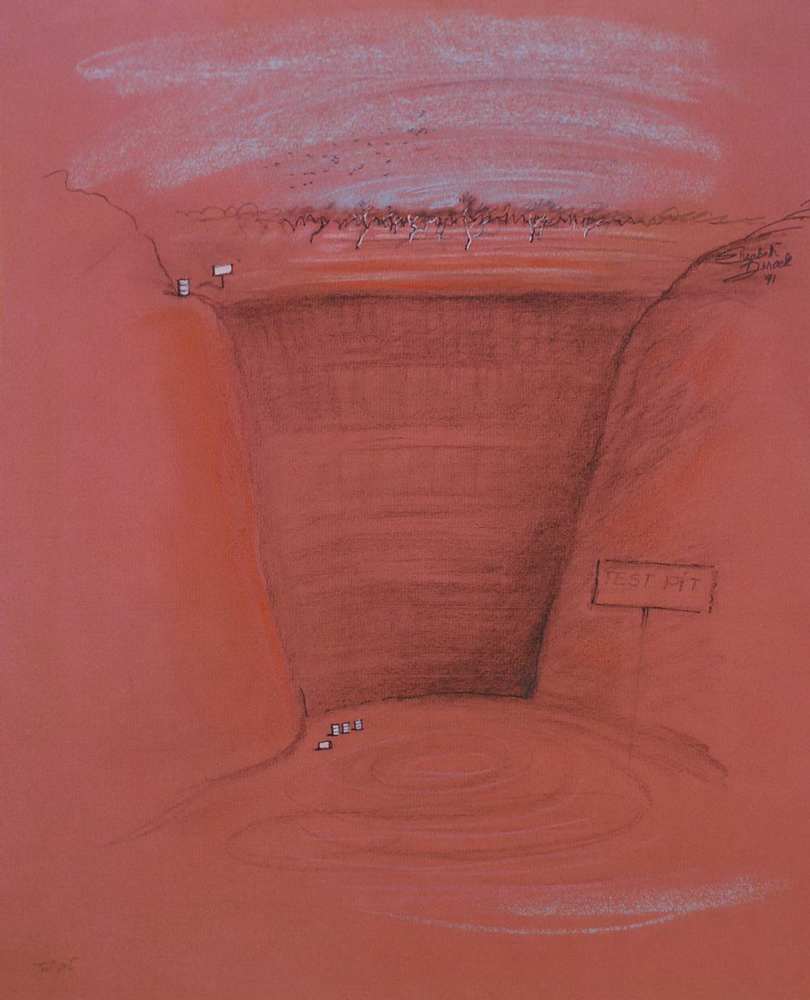
- Test Pit
- 1991
- collection: Rio Tinto